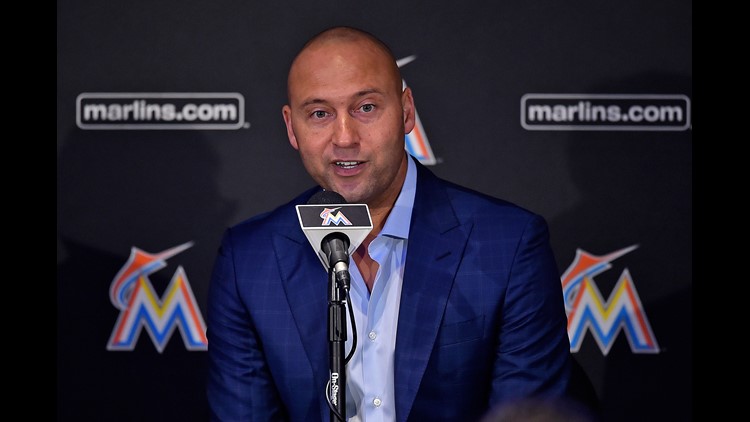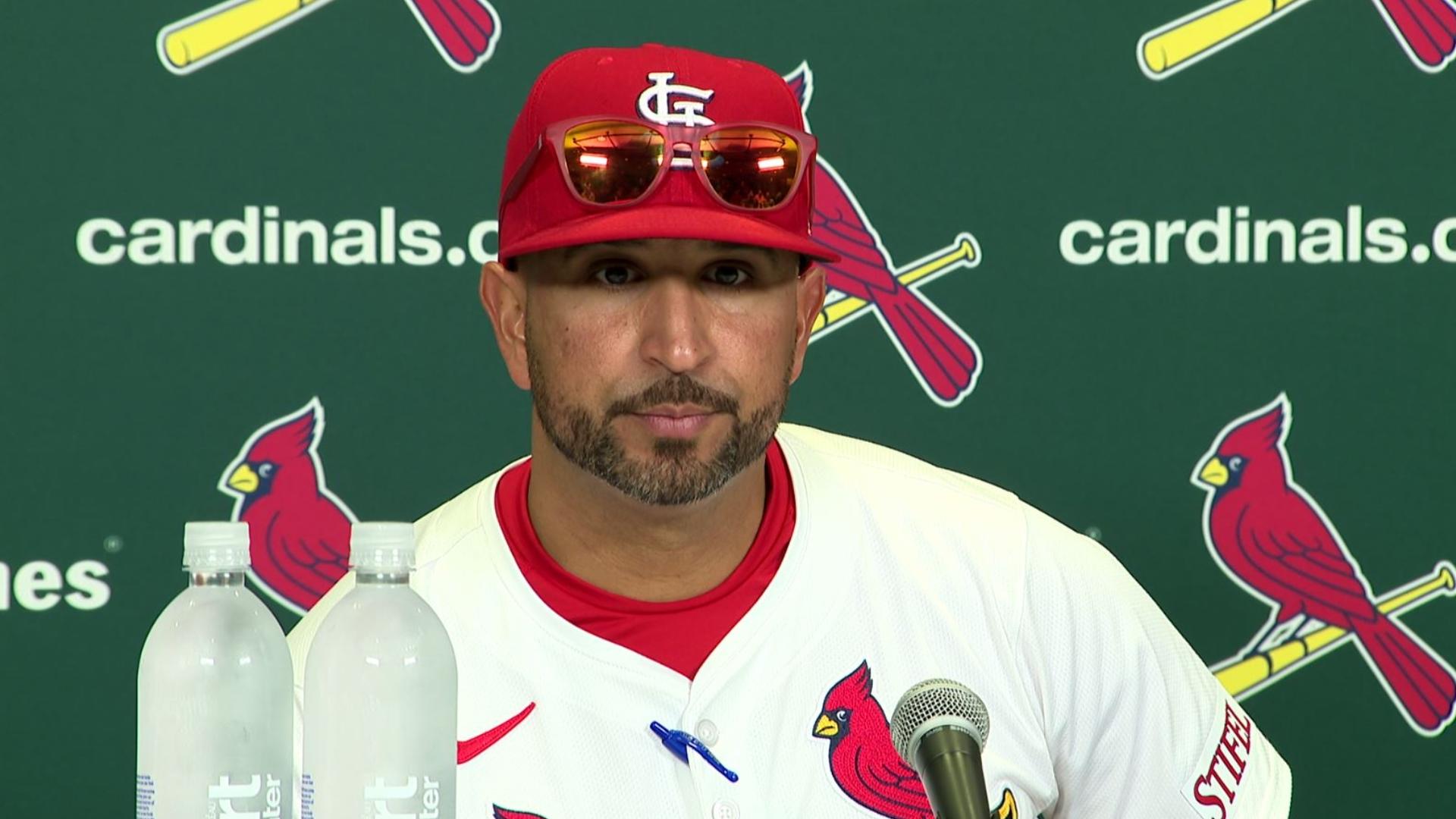Derek Jeter, arriving Wednesday in a stylish gray suit and white collared shirt, spent 20 years of his New York Yankees career feeling as if he were in control, and suddenly in his new gig, feels as if he has no control.
Jeter, in his first general managers’ meetings as CEO of the Miami Marlins, spent 17 minutes barraged by questions, asking how he plans to fix baseball’s worst franchise, whether or not he will trade Giancarlo Stanton, why he hasn’t spoken to Stanton, how can they possibly win without Stanton and how can they sell tickets without Stanton.
And just two hours later was blasted by powerful agent Scott Boras for wanting to slash player payroll.
Welcome to life as a Major League Baseball owner.
“We’re trying to build an organization that’s sustainable over time,’’ Jeter said. “I don’t like the world “rebuild’ because I think a lot of negativity comes with that. But we’re trying to build something here. And we will build something.
“But it will take time, and there has to be patience.’’
The trouble, of course, is that the Marlins’ fanbase is sick of being patient. They haven’t reached the postseason since 2003, and haven't had a winning season since 2009.
“That’s unacceptable,’’ Jeter said. “That’s unacceptable to the ownership group. It’s unacceptable to the fan base. But every team has to go through a period where they have to build, and we’re in that position right now.’’
Yet, before building, they plan a tear-down, and that includes the likelihood of moving Stanton and the remaining $295 million of his contract.
“There are some financial things we have to get in order,'' Jeter said. “That's the bottom line. If we were going to run the organization the way it was run before, we wouldn’t have bought it.”
This is why the Marlins plan to slash their payroll from $116 million to about $90 million, and the easiest way to accomplish it is by dumping the guy who just hit 59 home runs last season and could win the NL MVP award.
“We’re going to make decisions that sometimes may be unpopular decisions," says Jeter.
And, yes, it starts with trading Stanton.
Oh, sure, they have plenty of players who have value like outfielders Christian Yelich and Marcell Ozuna, but those are the last guys Jeter wants to trade. The ones he wants to move, pitcher Wei-Yen Chen and infielder Martin Prado, are untradeable. Sorry, no one is about to take Chen and the remaining $52 million on his contract the next three years, or Prado, who has $28.5 million owed to him.
They also are shopping second baseman Dee Gordon - who has a minimum of $38 million left on his deal, and potentially $51 million if his 2021 option vests - starter Edinson Volquez ($13 million) and reliever Brad Ziegler ($8 million).
The problem, as they discovered this week, is that no is willing to give them want they want for Stanton. There were eight teams who checked in, and not a single one will take on at least $200 million of his contract and also give up prospects. They’ll do one or the other, but not both. The San Francisco Giants and the St. Louis Cardinals are the clear-cut front runners.
“Trades are complicated in and of themselves," Yankees GM Brian Cashman told reporters, “but when you’re making enormous financial decisions simultaneously, it makes the process that much more complicated."
So if Stanton is traded, how can the Marlins expect to win? And if the Marlins don’t win, how do they expect to sell tickets? And if they can’t sell tickets, how will the franchise be financially successful?
This is why Boras spent a chunk of time ripping into the Marlins’ plan to trade Stanton and stripping payroll.
“When we allow sales of teams,’’ Boras said, “there needs to be some sort of legislation. There needs to be some restriction so that the integrity of the game, as it applies to other teams, is considered.’’
Boras insists the Marlins aren’t losing a single penny, let alone the projected $60 million in 2017. He believes they are simply trying to save money to recoup their investment.
“It has nothing to do with the fans,’’ Boras said. “It has nothing to do with winning. It has nothing to do with anything other than a financial plan that suits ownership without consideration of the impact it has on Major League Baseball.’’
Ah, nothing like being a human piñata for everything that goes wrong in an organization.
“It’s a little strange,’’ Jeter said. “You learn on the job, I guess. You learn from others’ experiences. There’s plenty of owners, presidents, CEOs, GMs, that have reached out and said they’re willing to help me out in any way. I think all of them have told me it’s going to take time. But you learn as you go.
“There’s really no playbook for it.”
Jeter has taken the uniform off forever, swapping his spikes for dress shoes, and the playbook has been replaced by a checkbook.
For the first time, Jeter feels officially like an owner.



